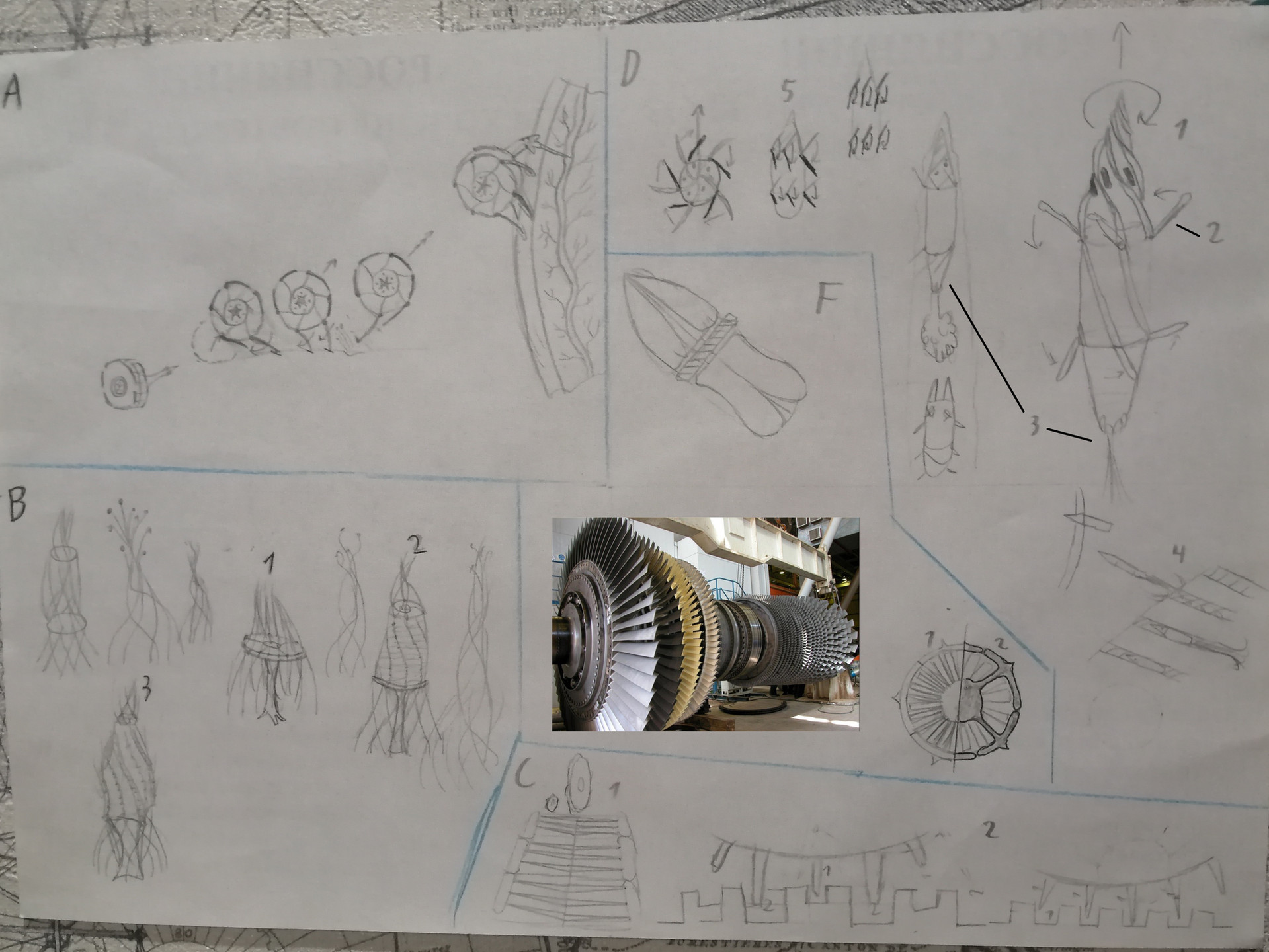HOME | DD
 AyzekKlark — Rotazoan Contest entry 1
AyzekKlark — Rotazoan Contest entry 1

#speculativeevolution #speculativebiology #speculativezoology #vathyzoic #invertebrate #futureevolution
Published: 2022-11-13 22:57:02 +0000 UTC; Views: 998; Favourites: 4; Downloads: 0
Redirect to original
Description
This is my contribution to contest from .Let me be honest - I am not very good at properly describing the concepts presented here in the style of a documentary or an article, but I more than understand the mechanics behind evolution, so I will describe my ideas in a free conversational form. Let's get started.
(A) The type of organism that I (think) didn't see on the Rotazoans art is parasites. In the picture, the most banal bloodsucker, like a tick/mite waiting for the owner to come, then jumps and sucks. I have some problems with understanding the ecologists and ecosystems of this era, but I see the option that Rotazoans can thus spread the young like a burdock its seeds. Perhaps it only later turned into parasitism.
(B)Looking at the curves of early terrestrial sea cucumbers, I could not help but remember about Catenaria, there are enough ways by which Rotazoans can disguise themselves: (B1)wheel shapes can stand on one of the axles as a support and extend their spikes to simulate the shape of Catenaria. Earlier Rotazoans have a larger and more noticeable body, so they (B2) will have to resort to imitating the play of light and shadow on their body to get lost in the forest, or (B3) squeeze their body in the form of Catenaria.
The methods of applying this adaptation are quite well known and understandable - Disguise in order to hide from a predator or prey, if the Rotazoan has chosen a path similar to modern predatory plants.
I remember that the cycles of Catenaria are poorly synchronized with animals, but if Rotazoans can simply react to fires, they can, for example, hide from fire, and then, when their shelters are destroyed, massively multiply sacrificing themselves.
(C) I may have thought about it too early, but there are some other organisms on the cover of the competition on the Rotazoan motorway. The brain immediately threw up the idea of symbiosis at the plant level that can only be pollinated by insects with a certain shape of the proboscis. Only in the case of Rotazoans, the selection factor will be compliance with the mathematical code (C2), which determines the number and size of gaps in this road organism. If you bring the symbiosis to the absolute, then, for example, rotozones with a 1:2 gear stroke on the wheel will have problems on the roads 1:1.
The problem with the young is solved by reducing the scale of the gaps closer to the edge of the roads (C1), which can be explained by the natural growth of this organism-roads, the older the segment, the wider it is and suitable for old Rotazoans. Or the young ones will sit in separate pens until they grow up.
Of course, there will be universal ones, those who are able to drive on any road or who are able to drive on other Rotazoan's roads at a certain stage of life, skipping those intervals that "go against the grain", but this will mean that the partner of this road in symbiosis is not able to protect their possessions, or has completely disappeared, which will lead to the gradual death of all roads this type is on the site.
(D)Another concept inspired by the shape of the early Rotazoan, as well as the absence of any underground life - drill. I can't know if there is something worth digging under the ground, but let's assume. Digging forward is carried out by "screwing" the head-drill (D1) of the creature into the rock while moving forward and rotating, for which the spikes (D2) make rowing movements (D5, I'm not sure if it turned out to draw what I wanted). However, with this form of movement, it is difficult to defend the rear part, but since there are eyes and an excretory system, that can lead to some form of poison/irritant released under pressure (D3). This implies a concept inspired by spikes from Darwin 4, (D4) drills can individually or in a bunch prepare several "launch shafts" and at the right moment release a jet of gas and fly forward to kill the victim or attach to it. It is likely that this form can work in water or even in the air, but it need tests.
(F)In general, it is quite difficult to imagine how something flying appears from wheeled Rotazoans, but evolution has always been about suitable conditions, like, nothing prevents you from getting the right shape in the water.
The shape I see is something like a turbine. Of course, these segments will not be able to fully rotate, but I believe simple rowing movements are quite capable of creating a flow of water or air sufficient for movement. And for better pumping, an outer shell will appear, turning the body into a living engine.
That's probably all, I'll make another post where I'll show not so realistic concepts, but still curious.
(My PC hate me, so there may be problems here that i will fix, like picture scale or proper word use)
Related content
Comments: 2

👍: 2 ⏩: 1

👍: 0 ⏩: 0























